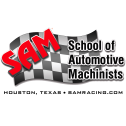What do they do?
Assemble or modify electromechanical equipment or devices, such as servomechanisms, gyros, dynamometers, magnetic drums, tape drives, brakes, control linkage, actuators, and appliances.
Also known as:
Assembler, Electrical Assembler, Electrical Machine Builder, Electromechanical Assembler, Electromechanical Equipment Assembler, Electromechanical Technician, Electronic Assembler, Electronic Technician, Electronics Assembler, Final Assembler, Machine Assembler, Mechanical Assembler, Production Associate, Wiring Technician
-
1.9%
Change
Ranks #31 in job growth rate1,420Job Openings
Ranks #8 in net job growth
Looking for colleges that offer a specific major? Use the College Match Tool to find your best-matched schools and discover your estimated Net Price!
People in this career often have talent in:
- Arm-Hand Steadiness - The ability to keep your hand and arm steady while moving your arm or while holding your arm and hand in one position.
- Finger Dexterity - The ability to make precisely coordinated movements of the fingers of one or both hands to grasp, manipulate, or assemble very small objects.
- Near Vision - The ability to see details at close range (within a few feet of the observer).
- Manual Dexterity - The ability to quickly move your hand, your hand together with your arm, or your two hands to grasp, manipulate, or assemble objects.
People in this career often do these activities:
- Inspect installed components or assemblies.
- Align parts or workpieces to ensure proper assembly.
- Assemble electrical or electronic equipment.
- Connect supply lines to production equipment or tools.
- Measure dimensions of completed products or workpieces to verify conformance to specifications.
- Review blueprints or other instructions to determine operational methods or sequences.
- Mark products, workpieces, or equipment with identifying information.
- Reshape metal workpieces to established specifications.
- Disassemble equipment for maintenance or repair.
- Clean workpieces or finished products.
- Apply lubricants or coolants to workpieces.
- Operate industrial equipment.
- Drill holes in parts, equipment, or materials.
- Operate cranes, hoists, or other moving or lifting equipment.
- Assemble electromechanical or hydraulic systems.
This page includes data from:

 Occupation statistics: USDOL U.S. Bureau of Labor Statistics Occupational Employment Statistics
Occupation statistics: USDOL U.S. Bureau of Labor Statistics Occupational Employment Statistics
 Videos: CareerOneStop, USDOL/ETA and the Minnesota Department of Employment & Economic Development
Videos: CareerOneStop, USDOL/ETA and the Minnesota Department of Employment & Economic Development








